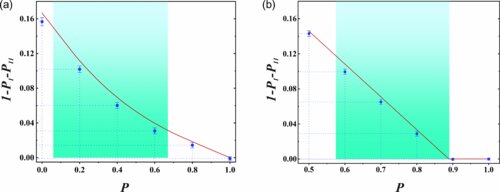In a study published in Physical Review Letters, the team led by Academician Guo Guangcan from the University of Science and Technology of China of the Chinese Academy of Sciences (CAS), collaborating with Prof. Wang Zizhu from the University of Electronic Science and Technology of China, proposed an optimized detection method for high-dimensional entanglement for the first time.
Preparing and detecting quantum entanglement is the key to quantum information processing. With the increase of dimensions and particles, the higher-dimensional system brings about both the sheer detection difficulty in computation and the excess costs in resources. Apparently, the traditional detection methods barely work.
Confronted with the challenges in high-dimensional entanglement detection, researchers adopted fidelity-based entanglement witnesses to detect a 32-dimensional entanglement state with its fidelity reaching the highest level in the world. However, for common non-maximally high-dimensional entanglement detection, conventional fidelity-based witnesses were not applicable.
To remove this barrier, researchers need to supplement fidelity-based witnesses with experiment-friendly protocols that can detect unfaithful entanglement. Following this path, they designed a method to automatically search for optimal protocols for certifying high-dimensional bipartite entanglement.
They first experimentally prepared a series of high-dimensional bipartite target states in an innovative way. And then they implemented a few local measurements to achieve the optimal quantum entanglement detection. To certify the entanglement in four-dimensional photonic states, only some three-setting protocols were adopted.
This study solves the problem of detecting high-dimensional bipartite entangled states. It lays a foundation for realizing multiple high-dimensional quantum information processing and promotes the research of quantum physics in high-dimensional systems.
More information:
Xiao-Min Hu et al, Optimized Detection of High-Dimensional Entanglement, Physical Review Letters (2021). DOI: 10.1103/PhysRevLett.127.220501
Provided by
Chinese Academy of Sciences
Citation:
Optimized method to detect high-dimensional entanglement (2021, December 6)



